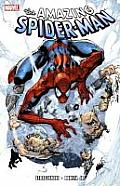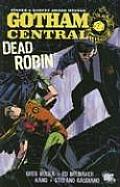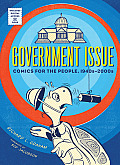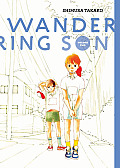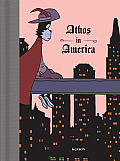Link to this review in the form of a comic strip by geneambaum tagged graphic novel • biography • coming of age
Link to this review by billba tagged superhero • graphic novel
In 2001 Babylon 5 creator J. Michael Straczynski (JMS) took charge of everybody’s favorite web-slinger for an eventful two-year run. He was not shy about making changes: Peter Parker got a new job, Aunt May found out about his secret identity, and a new ally made Peter question the source of his powers. And that was just in the first few issues.
Collects Amazing Spider-Man #30-45.
Why I picked it up: These are some of my favorite comics, but it was the price that got me: $34.99 for sixteen issues is just a great deal.
Why I finished it: The unique style of artist John Romita, Jr., son of longtime Spider-Man illustrator John Romita, always astounds me. I particularly enjoyed his take on Peter’s estranged wife MJ. A few spare lines suffice to convey her enormous range of of emotions.
I’d give it to: Joel, who uses LOTS of words when writing his very funny comic. Marvel did a monthlong event called Nuff Said during which all of the comics were wordless. JMS’ silent Spider-Man story is collected here, along with his script, and I lovingly suggest that Joel could learn a lot from both.
Link to this review by geneambaum tagged mystery • short stories • graphic novel • superhero
This collection contains several stories about Gotham City’s police force and their struggle to fight crime and corruption in a city that has more than its share of super-powered villains.
In the title story, members of Gotham City’s police force investigate a murder where the victim appears to be Batman’s sidekick, Robin. Detectives investigate, but Batman is always one step ahead of them, busting heads and asking questions.
In a shorter story, “Sunday Bloody Sunday,” detectives try to make their way across the city as a cosmic-level crisis turns the city upside down.
In the final story, “Corrigan 2,” detectives investigate a corrupt cop.
Contains Gotham Central #33-40.
Why I picked it up: I read the first four volumes a long time ago and they were excellent. (I found this recently in a used bookstore.)
Why I finished it: It provides a brilliant way to show what it would be like to be a normal person in a crazy, superhero and super villain filled world, much like Marvels did through a reporter’s eyes. Detectives Allen and Montoya are frustrated to always be chasing Batman (though they sometimes have to rely on him). They put their lives on the line when going up against costumed maniacs. And, like everyone else, they’re awed when the Teen Titans (and particularly Starfire) come in for questioning.
I’d give it to: Sameer, who loved Rucka’s Queen and Country. Both Rucka and Brubaker really make the comics form work here, and I hope that his love of Rucka’s pacing in Q&C will help him appreciate the mastery of the storytelling craft on display here, both for the writing and the art. (And if he likes this, I’ll spring a good Batman book on him soon.)
Link to this review by sarahhunt tagged graphic novel • nonfiction • anthology • history
Ever since comic books were around, the U.S. government has been using them to inform the public about issues from health to how to repair army vehicles. The book reproduces some entire books (like the Dr Seuss and Leaf Munro collaboration This Is Ann) and has covers and excerpts of even more (like Ricky and Debbie in Sardineland, sponsored by the Maine Sardine Council).
Why I picked it up: The book has the comic book companion to the Duck and Cover films starring Bert the Turtle, a character I got to know in Bomboozled.
Why I finished it: Graham makes the startling connection that the U.S. government (and many cities and states, too) were using comics to change people’s behavior for the good at the same time that hearings were going on to prevent other comics from turning kids into delinquents! The government really did believe in the power of comics!
I’d give it to: Raleigh, a Zap Comix fan, who would like Dennis Kitchen’s trippy Wisconsin Department of Justice comic on the importance of knowing your rights at an auto repair shop!
Link to this review by sarahhunt tagged biography • nonfiction • graphic novel
A graphic novel biography of Annie Sullivan, the teacher who taught deaf and blind Helen Keller when no one thought she could learn. The pride and the stubbornness that drive Sullivan to succeed later cause problems when she and Keller are accused of fraud and plagiarism. (Keller wrote a fairy tale as a present for the students of The Perkins School. It was then published to show her amazing progress. A magazine article later showed that it was nearly identical to another published story. People wondered if Sullivan had tried to fake Keller’s abilities, or if Keller had simply not understood that she was remembering rather than imagining the tale.)
Why I picked it up: I flipped through it and saw how Lambert depicts Keller’s limited perception of reality before Sullivan helped her. She’s shown in a black void. The only other thing in her world is the shape of the object she’s touching.
Why I finished it: The comics format is really the perfect way to show, from Keller’s point of view, how Sullivan’s efforts pay off as she comes to understand the world outside herself and to communicate with others. When she finally understands that everything has a name and begins to develop language, her world (and the black void around her) becomes populated with words, objects and people. Then the comic frames fill with color and life.
Sullivan’s own story, which alternates with Keller’s, was painful. She spent much of her youth in a terrible almshouse with no education and little supervision. Rats and old magazines were her only playthings. She had to make her own case to get any education at all. At fourteen, after pleading to be sent to school, she was sent to The Perkins School for the Blind due to her limited vision (it later improved with surgery). She started classes unable to write her own name, but then soaked up every lesson and devoured all of the books she could. Later, her passion and anger pushed her to do everything she could to give Keller the same access to knowledge.
I’d give it to: Hugh, who will love that Lambert based his lettering for each character’s narration on examples of their handwriting, even Keller’s careful writing-board writing.
Link to this review by snow tagged graphic novel • romance
Tanizaki owns the art gallery In the Walnut. He may look scruffy, but his lazy exterior hides a sharp mind and a keen eye, both of which help him spot art forgeries (and make his own). To the distress of Tanizaki’s boyfriend, wannabe filmmaker Nakai, In the Walnut sometimes does less-than-reputable jobs. Many of those, though, are used to right wrongs that Tanizaki has spotted. He may be disreputable, but he loves art.
Why I picked it up: I’m a big fan of Kawai’s yaoi manga (graphic novel romances which feature a relationship between two men, which are written by women for women). I’d read the beginning of Tanizaki and Nakai’s romance as a short at the end of Kawai’s Our Everlasting and wanted to see more of the grumpy art lover and the perky, airhead filmmaker.
Why I finished it: Kawai is good at building realistic relationships (something that yaoi isn’t always known for). Her skills are in top form, and Tanizaki and Nakai’s romance is a constant thread throughout all of the stories. I enjoyed seeing how both men supported each other and worked to help friends, customers, and each other through hard times.
The librarian in me also enjoyed that Kawai’s creator notes included titles of books she consulted and other information about her research process. She tells readers which artists or elements she made up and which are factual. This touch added a sense of gravity and maturity to the creator’s notes.
I’d give it to: Bryce, who loves fine art and has a soft heart. He’ll appreciate stories such as “Liar Angel,” where Tanizaki helps a young boy who wants a Paul Klee drawing to give to his sister as she gets ready for eye surgery.
Link to this review by geneambaum tagged science fiction • graphic novel
After Han Solo is caught cheating at Sabac, he has to make it up to a local gangster. He’s forced to steal an accounting droid back from the Empire before it can spill its secrets. Accompanying him will be his former partner, Billal. Chewbacca is forced to fight in arena games against overwhelming odds until Han returns.
Why I picked it up: I’ve lost track of the sprawling fictional universe of Star Wars graphic novels. But every once in a while I pick up one with Chewbacca on the cover.
Why I finished it: Chewbacca defeats his first opponent, reigning champion Dravin Razorbrain, whose metal exoskeleton features spinning blades and other goodies, with a stick.
I’d give it to: My friend Jenni’s son, Will, along with a few action figures. I’d follow the gift up with a geeky lecture on why Han and Chewie are Star Wars’ best characters. (He’d ignore me, but I’d feel justified in delivering it, at least.)
Link to this review by geneambaum tagged coming of age • graphic novel
Grade school-age Shuichi wants to be a girl, his classmate Yoshino wants to be a boy, and they know each other’s secret. They cross-dress (including a long-haired wig for Shuichi) and hang out at the mall together. They have a few friends who know their secret, too, including a transgendered woman named Yuki and her boyfriend.
Why I picked it up: The first volume was excellent.
Why I finished it: Even though Shuichi and Yoshino keep one another’s secrets, I felt their embarrassment when hanging out and trying to decide how to address one another / refer to each other. The story felt even more real when their teacher asked them to share their dreams and neither could.
I’d give it to: My ninth grade English teacher, Lewis, who came out to me (long after I graduated high school) by showing me pictures of himself in drag. (He looked like a very buff Phyllis Diller.) He’d like the moment Yuki reveals her past to the kids by showing them a picture of her coming of age cermony, when she was still male.
Link to this review by geneambaum tagged graphic novel • short stories
Six short comics from Jason starring his deadpan, animal-headed people.
Why I picked it up: I love Jason’s comics (Isle of 100,000 Graves, Werewolves of Montpellier) and I thought this was going to be a book-length sequel to The Last Musketeer.
Why I finished it: I was wrong. This is a collection of six short stories, only one of which stars The Last Musketeer’s Athos. There’s also the story of a kidnapping, a man trying to find a body for a woman’s head (kept alive by machinery) as it harangues him, and an incredible feat of acrobatic storytelling that unfolds via four characters‘ thoughts.
I’d give it to: Dan, who’d enjoy my favorite story in the collection, “A Cat from Heaven,” which the press release for the book calls a “Bukowski pastiche.” It casts Jason as a hard-drinking, foul mouthed, violent asshole who, at a reading of his comics, describes them to an audience rather than just showing them the pictures.


